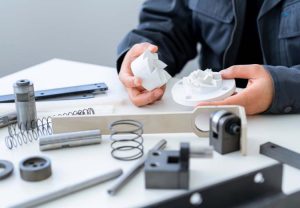Rapid Prototype Machined Parts: How Do They Aid Testing?
Rapid prototype machined parts are instrumental in the testing phase of product development, offering a fast and flexible way to evaluate design concepts, material choices, and functionality before moving into full-scale production. These prototypes replicate the final product's dimensions, materials, and properties closely, providing critical insights that can significantly influence the design and production process. Below, we explore how these prototypes facilitate various testing methodologies to ensure product viability and performance.

Accelerating Design Verification
Quick Turnaround for Functional Testing
Rapid prototyping enables the production of machined parts within a short timeframe, allowing for immediate functional testing. This quick turnaround is crucial for evaluating how well a part or assembly performs its intended function in a real-world scenario. For instance, engineers can test the strength, flexibility, and endurance of a component under operational stresses, such as heat, pressure, or physical strain, and receive feedback within days, not weeks or months.
Precise Material Characteristics
The use of actual production materials in rapid prototype machined parts means that the testing phase can accurately assess material-specific characteristics and behavior. This precision allows for the examination of thermal resistance, corrosion resistance, weight, and material strength in a way that closely mirrors the final product's performance, providing invaluable data for refining design and material choices.
Enhancing Product Development
Iterative Design Improvement
Rapid prototype machining supports an iterative approach to product development, where designs are continuously refined based on testing feedback. This process enables the identification and correction of design flaws early, reducing the risk of costly changes during production or post-launch. Iterative testing of prototypes helps in optimizing design for manufacturing (DFM), ensuring that the final product is not only functional but also cost-effective to produce.
Customization and Experimentation
With rapid prototyping, engineers have the flexibility to experiment with different designs, materials, and manufacturing processes without significant time or cost penalties. This ability to customize and quickly test various prototypes encourages innovation and can lead to breakthroughs in product design and performance. Customization is particularly beneficial in industries where tailored solutions are critical, such as medical devices or aerospace components.
Reducing Costs and Time-to-Market
Early Detection of Manufacturing Issues
By testing prototypes that are identical to the final product in terms of materials and manufacturing processes, companies can identify potential production issues early in the development cycle. This early detection saves time and resources by preventing the need for modifications once production has begun, thereby reducing overall costs and accelerating time-to-market.
Validation of Assembly and Integration
Rapid prototype machined parts also allow for the testing of assembly and integration with other components, ensuring that all parts fit together as designed. This validation is crucial for complex products where precise tolerances and alignments are necessary for proper function. Early assembly testing helps avoid issues that could lead to assembly line slowdowns or, worse, product recalls.
In summary, rapid prototype machined parts are a critical tool in the product development process, enabling fast and effective testing that drives design verification, iteration, and innovation. By facilitating early detection of design and manufacturing issues, these prototypes help optimize product quality, reduce production costs, and shorten the path to market. Their role in enhancing the testing phase underscores their value in achieving successful product launches and competitive advantage.
